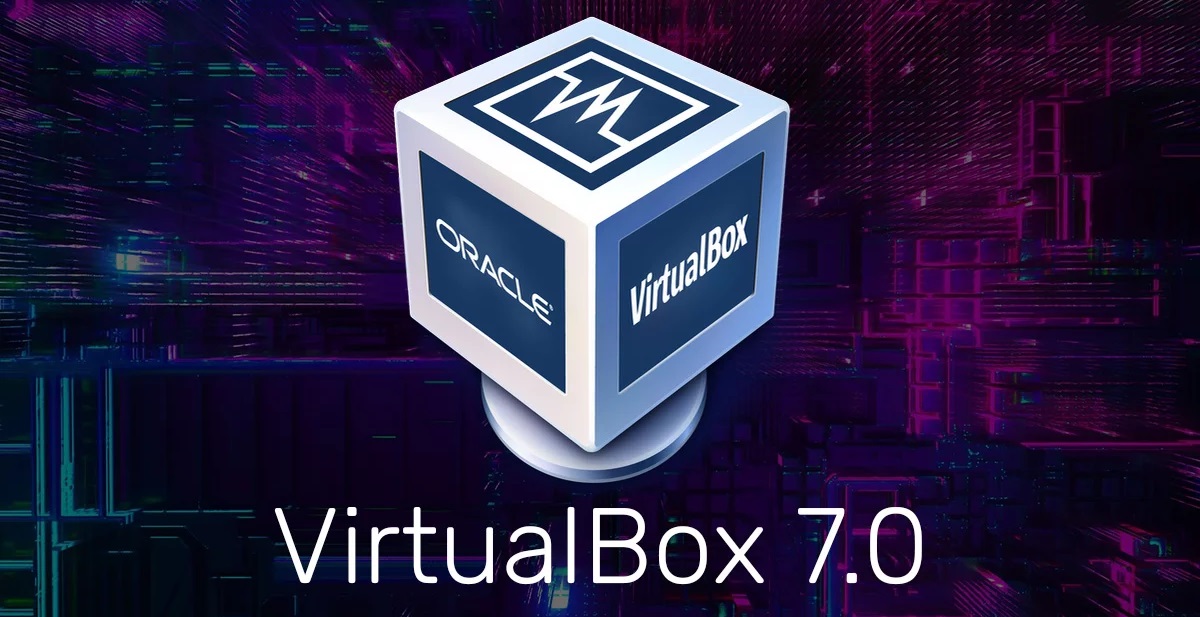
VM VirtualBox is virtualization software for x86/amd64 architectures
After nearly three years since the last significant release, Oracle has published the release of the new version of your virtualization system, «Virtual Box 7.0″, release featuring full encryption for VMs, management enhancements for cloud VM environments, GUI enhancements, and many more changes.
For those who are unfamiliar with VirtualBox, I can tell you that this is a multiplatform virtualization tool, that gives us the possibility of creating virtual disk drives where we can install an operating system within the one we normally use.
Main new features of VirtualBox 7.0
In this new version of VirtualBox 7.0 that is presented, a One of the most interesting novelties that stands out is the support for the complete encryption of virtual machines, which is also used for configuration registers and saved status segments.
Another change that stands out isthe ability to add virtual machines hosted in cloud environments to Virtual Machine Manager. Management of such virtual machines is carried out by analogy with virtual machines hosted on the local system.
In addition to that, we can also find that the wizard for creating new virtual machines has been redesigned, which now supports the automated installation of the operating system in a virtual machine, as well as a new widget for browsing and searching the VirtualBox User Guide and a new notification center, in which reports related to the display of information on the progress of operations and error messages are unified.
The graphical interface has a built-in utility for monitoring resources of running guest systems, implemented in the style of the parent program. The utility allows you to track the load on the CPU, memory consumption, I/O intensity, etc.
It is also highlighted that Improved theme support in the GUI for all platforms. For Linux and macOS, platform-provided theme engines are used, and a special engine for Windows is implemented.
Has been added a new type of “default” host sound driver, allowing virtual machines to be moved between different platforms without explicitly changing the sound driver. When you select "default" in the driver settings, the actual sound driver is automatically selected based on the operating system you are using.
Improved the list of virtual machines in the GUI, added the ability to select multiple virtual machines at once, added an option to disable the screensaver on the host side, redesigned general settings and wizards, improved mouse handling in multi-monitor setups on the X11 platform, reworked media detection code, moved NAT settings to the Network Manager utility.
En Linux, the Guest Control package provides initial support for automatic updating of plugins for Linux-based guest systems, as well as the ability to wait for a virtual machine to reboot when updating guest plugins via the VBoxManage utility.
En Windows now have experimental support for autostart virtual machines, which allows a VM to start regardless of user login.
En macOS, have removed all kernel-specific extensions, and the platform-provided hypervisor and vmnet framework are used to run virtual machines.
Of the other changes that stand out from this new version:
- Added the ability to connect local virtual machines to the cloud network.
- A new “waitrunlevel” command has been added to the VBoxManage utility, which allows you to wait for a certain runlevel to come up on the guest system.
- Updated icons.
- The graphical interface has been translated to the latest versions of Qt.
- Added preliminary support for Apple computers with Apple Silicon ARM chips.
- Linux guest components have been redesigned for screen resizing and basic integration with some user environments has been implemented.
- A 3D driver has been provided that uses DirectX 11 on Windows and DXVK on other operating systems.
- Added drivers for virtual IOMMU devices (different options for Intel and AMD).
- Virtual devices implemented TPM 1.2 and 2.0 (Trusted Platform Module).
- Drivers for USB EHCI and XHCI controllers have been added to the core set of open drivers.
- Added support for booting in Secure Boot mode to the UEFI implementation.
- Added experimental ability to debug guest systems using GDB and KD/WinDbg debuggers.
If you are interested in knowing more about it about the release of this version VirtualBox 7.0 you can consult the details in the following link.
How to install VirtualBox 7.0 on Ubuntu and derivatives?
For those who are already VirtualBox users and they have not yet updated to the new version, they should know that they can only update by opening a terminal and typing the following command in it:
sudo apt update sudo apt upgrade
Now for those who are not yet users, you should know that before installing, they need to ensure that hardware virtualization is enabled. If they are using an Intel processor, they must enable VT-x or VT-d from their computer's BIOS.
In the case of Ubuntu and derivatives, we have two methods to install the application or, where appropriate, update to the new version.
The first method is by downloading the "deb" package offered from the official website of the application. The link is this.
The other method is adding the repository to the system. To add the official VirtualBox package repository, they should open a terminal with Ctrl + Alt + T and run the following command:
echo "deb https://download.virtualbox.org/virtualbox/debian $(lsb_release -cs) contrib" | sudo tee /etc/apt/sources.list.d/virtualbox.list
Done this now We must add the public PGP key from the official VirtualBox packages repository to the system.
Otherwise, we will not be able to use the official VirtualBox package repository. To add the public PGP key from the official VirtualBox package repository, run the following command:
wget -q https://www.virtualbox.org/download/oracle_vbox_2016.asc -O- | sudo apt-key add -
We must update the APT package repository with the following command:
sudo apt-get update
Once this is done, now we are going to proceed to install VirtualBox to the system with:
sudo apt install virtualbox-7.0
And ready with it, we can use the new version of VirtualBox in our system.